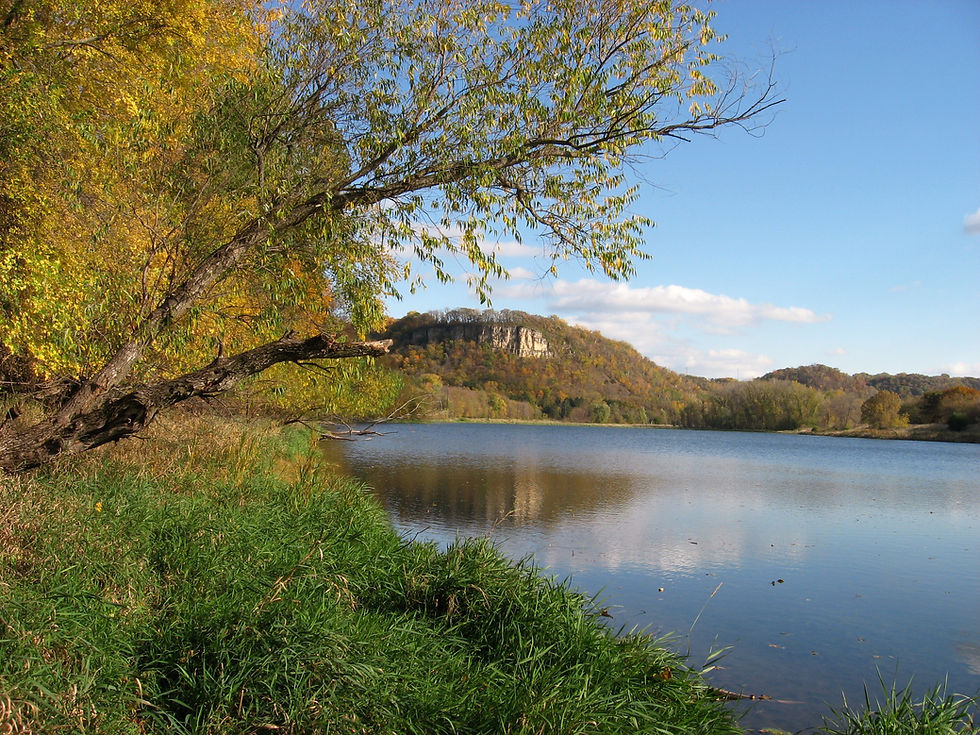It's That Time Again - Mayflies
- Bruce Ause
- Jul 15, 2017
- 3 min read

Mayflies
The annual arrival of mayflies is now upon us. It started shortly after the 4th of July. This phenomenon is a positive indication of a healthy river. Mayfly nymphs will spend various lengths of time, up to two years, foraging on the bottom of the river before emerging as adults. High levels of pollution will kill off these nymphs.

Purple Martin Colony
For many years, there has been a most productive purple martin colony on the end of Greens Point in Wacouta. This legendary colony was the work of the late Ray Charlson.

Female Purple Martin
During the last couple weeks of June, the above mentioned colony was a whirlwind of activity as adult martins were frantically trying to satisfy the appetites of their young and growing hatchlings. Interestingly enough, the young martins fledged at almost the same time as the mayfly hatch began. How convenient!
On the morning of July 10th, I observed numerous juvenile and adult martins circling overhead feasting on mayflies surviving the previous night's hatch.

Dragonfly
Several dragonflies are now appearing along the Rattlesnake Bluff trail and around our backyard pond. The most common species is the widow skimmer. The nymphs of these insects live in the water, molt and transform into adults possessing wings. Fortunately for us, dragonflies feed on our abundant supply of mosquitoes. One notable predator of the dragon fly is the purple martin.

Fawn
On my July 1st post, I featured four turkey vultures feeding upon a road killed deer down by the town hall. Three days later as Kathy and I were having lunch out on our deck, a young fawn appeared in our backyard. A few minutes later, a second fawn joined the first. For the next 45 minutes, we observed them run, jump and kick in our backyard like a pair of fresh colts.
Eventually, we became concerned that the twin fawns might be orphaned and their mother might have been the road killed deer. A few minutes later, out steps "mama" doe from the heavy underbrush nearby. Evidently, their robust exercise regiment was being supervised the entire time.

Black Raspberries
A few days after observing ripe mulberries dropping from the trees, another favorite summer fruit was showing up. Black raspberries "blackcaps" are now very plentiful along the trail. If you can beat the raccoons and catbirds to these summer treats. it is easy to gather enough to make a batch of jam or add them to a dish of ice cream.

Purple Coneflower
Another colorful prairie flower showing up along the trail is the purple coneflower. During the pioneer days, this plant was referred to as the "thirst plant" because the roots had a salty, peppery taste. When roots were chewed, the flow of saliva increased which relieved the traveler's craving for water.

Bouncing Bet
While paddling my canoe in the backwaters at the head of Lake Pepin early in the morning of Tuesday July 11th, I came across two most interesting observations. On sandy stretches of the shoreline, the very colorful wildflower "Bouncing Bet" (Saponaria officinalis) was in full bloom. When crushed leaves of this plant come in contact with water, a rich lather is produced. On local kayaking trips with my ELC participants, they were pleasantly surprised to learn they could wash their hands using leaves from this plant.

Brood of Wood Ducks
The second observation was truly extraordinary. While paddling across an open stretch of water, I observed a hen wood duck leading her newly hatched brood of ducklings. It wasn't until I later downloaded my photos onto my computer, would I count that she had 30 ducklings with her! Average brood size for wood ducks is 10 to 12. This is "ducky" daycare taken to the extreme.




Comments